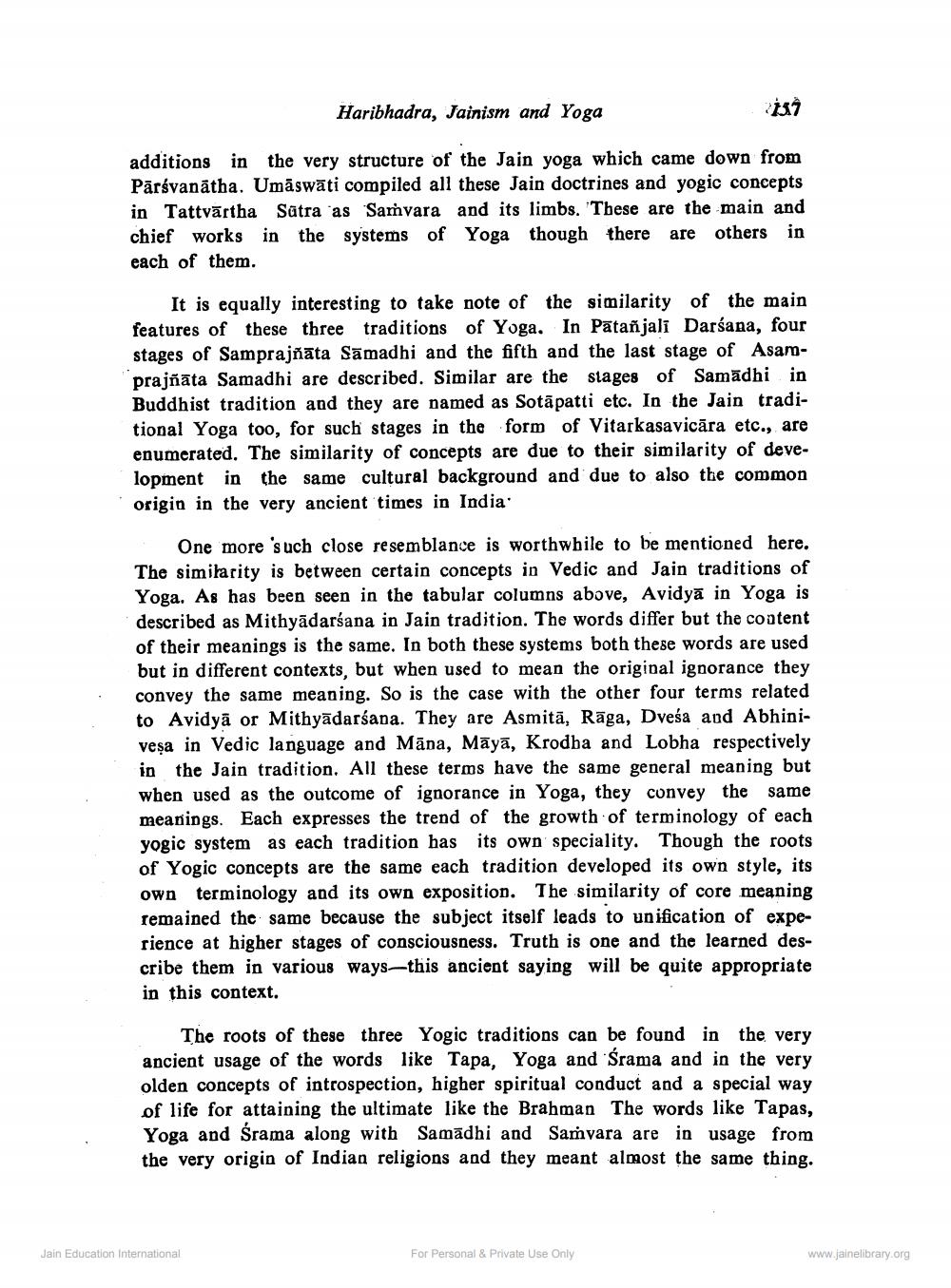________________
Haribhadra, Jainism and Yoga
2039
additions in the very structure of the Jain yoga which came down from Pārsvanātha. Umāswāti compiled all these Jain doctrines and yogic concepts in Tattvārtha Sūtra as Samvara and its limbs. These are the main and chief works in the systems of Yoga though there are others in each of them.
It is equally interesting to take note of the similarity of the main features of these three traditions of Yoga. In Patañjali Darśana, four stages of Samprajñāta Sāmadhi and the fifth and the last stage of Asamprajñāta Samadhi are described. Similar are the stages of Samādhi in Buddhist tradition and they are named as Sotāpatti etc. In the Jain traditional Yoga too, for such stages in the form of Vitarkasavicāra etc., are enumerated. The similarity of concepts are due to their similarity of development in the same cultural background and due to also the common origin in the very ancient times in India
One more 'such close resemblance is worthwhile to be mentioned here. The similarity is between certain concepts in Vedic and Jain traditions of Yoga. As has been seen in the tabular columns above, Avidyā in Yoga is described as Mithyādarśana in Jain tradition. The words differ but the content of their meanings is the same. In both these systems both these words are used but in different contexts, but when used to mean the original ignorance they convey the same meaning. So is the case with the other four terms related to Avidyā or Mithyādarśana. They are Asmitā, Rāga, Dveśa and Abhiniveșa in Vedic language and Māna, Māyā, Krodba and Lobha respectively in the Jain tradition. All these terms have the same general meaning but when used as the outcome of ignorance in Yoga, they convey the same meanings. Each expresses the trend of the growth of terminology of each yogic system as each tradition has its own speciality. Though the roots of Yogic concepts are the same each tradition developed its own style, its own terminology and its own exposition. The similarity of core meaning remained the same because the subject itself leads to unification of experience at higher stages of consciousness. Truth is one and the learned describe them in various ways—this ancient saying will be quite appropriate in this context.
The roots of these three Yogic traditions can be found in the very ancient usage of the words like Tapa, Yoga and śrama and in the very olden concepts of introspection, higher spiritual conduct and a special way of life for attaining the ultimate like the Brahman The words like Tapas, Yoga and Srama along with Samādhi and Samvara are in usage from the very origin of Indian religions and they meant almost the same thing.
Jain Education International
For Personal & Private Use Only
www.jainelibrary.org




